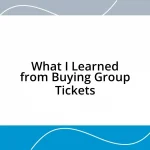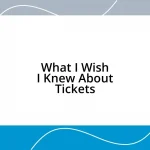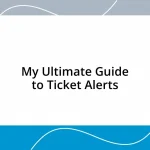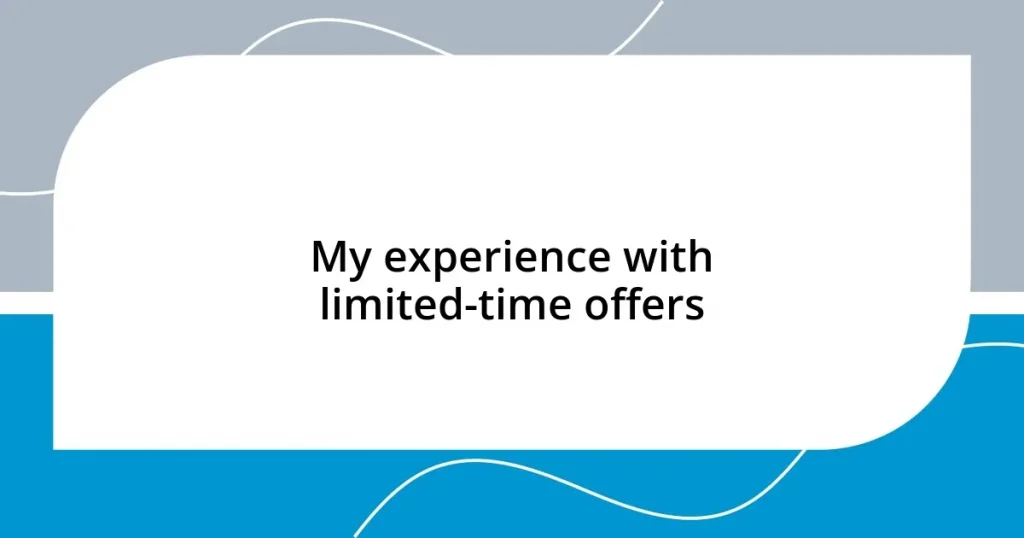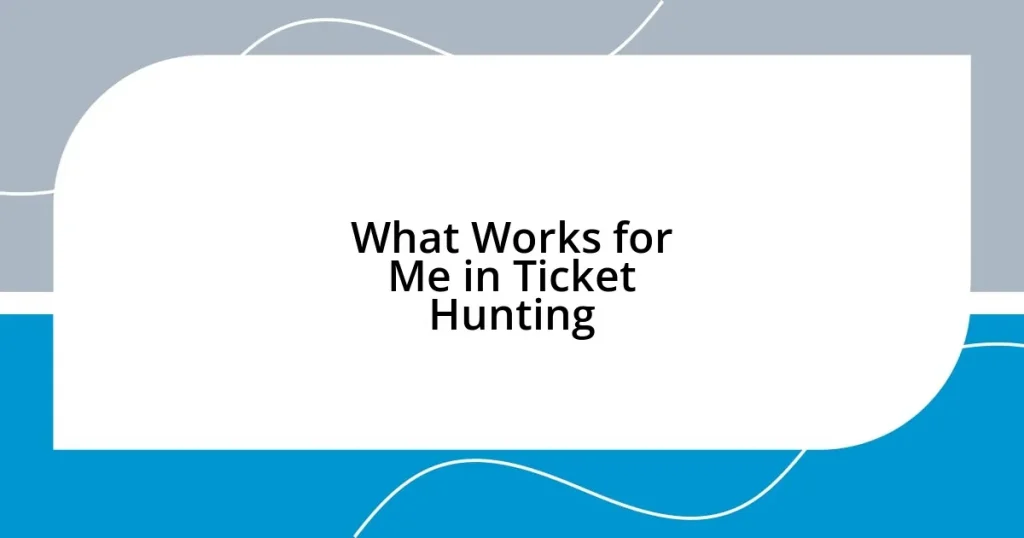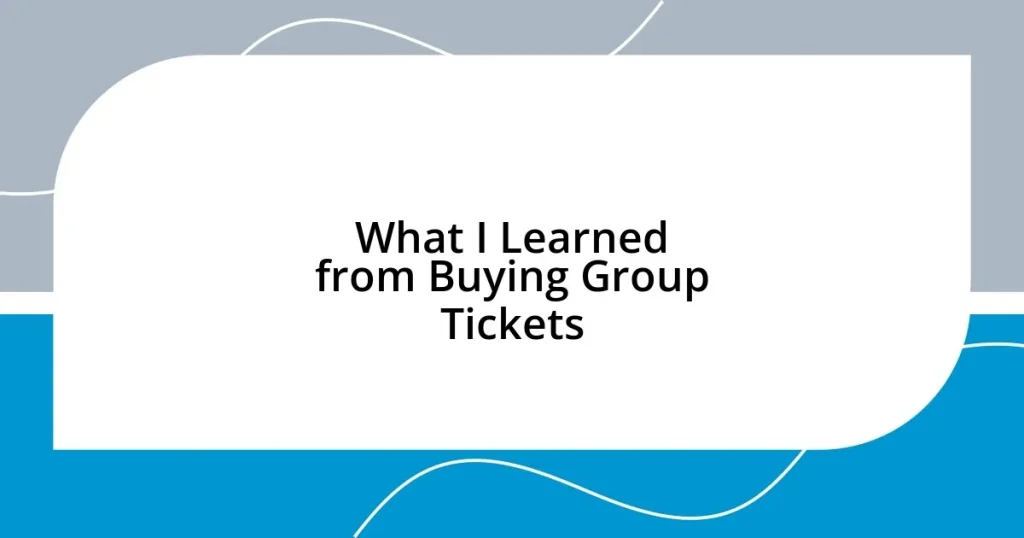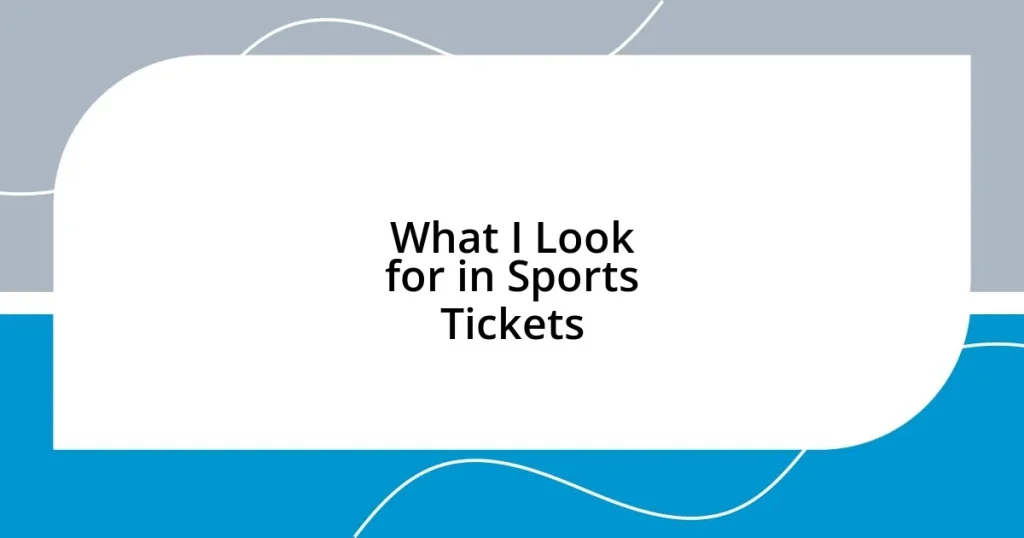Key takeaways:
- Limited-time offers exploit psychological triggers like FOMO, scarcity, and urgency, often leading to impulsive decisions.
- Types of limited-time offers include flash sales, introductory offers, and seasonal promotions, each designed to create urgency and encourage spending.
- It’s essential to evaluate the true value of offers and avoid common pitfalls such as impulsive buying driven by hype and overlooking fine print.
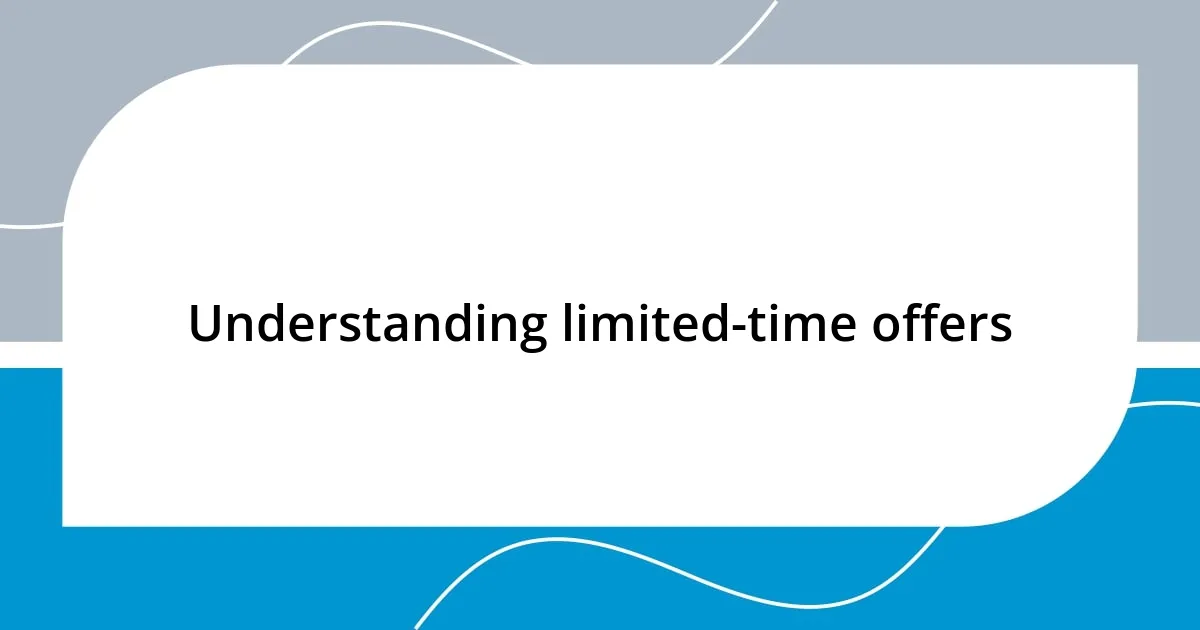
Understanding limited-time offers
Limited-time offers create a sense of urgency that can be quite compelling. I remember seeing a flash sale on a gadget I had been eyeing for months. The excitement and anxiety mixed together as I debated whether to hit that purchase button; it was thrilling but also nerve-wracking—what if I missed out?
What I find fascinating about these offers is how they tap into our fear of missing out (FOMO). Have you ever felt that rush when you see a countdown timer? It’s almost as if time itself is pushing you to decide. That emotional trigger can lead to impulsive choices, sometimes making me question whether I truly needed that item or if I was just caught up in the moment.
Understanding the psychology behind limited-time offers is essential. They often make us think we’re getting a unique opportunity that won’t come around again. I’ve been there, feeling a rush every time I snagged a deal but later realized some of those purchases were not as meaningful as I first believed. How about you? Have you ever questioned the value behind a last-minute buy?
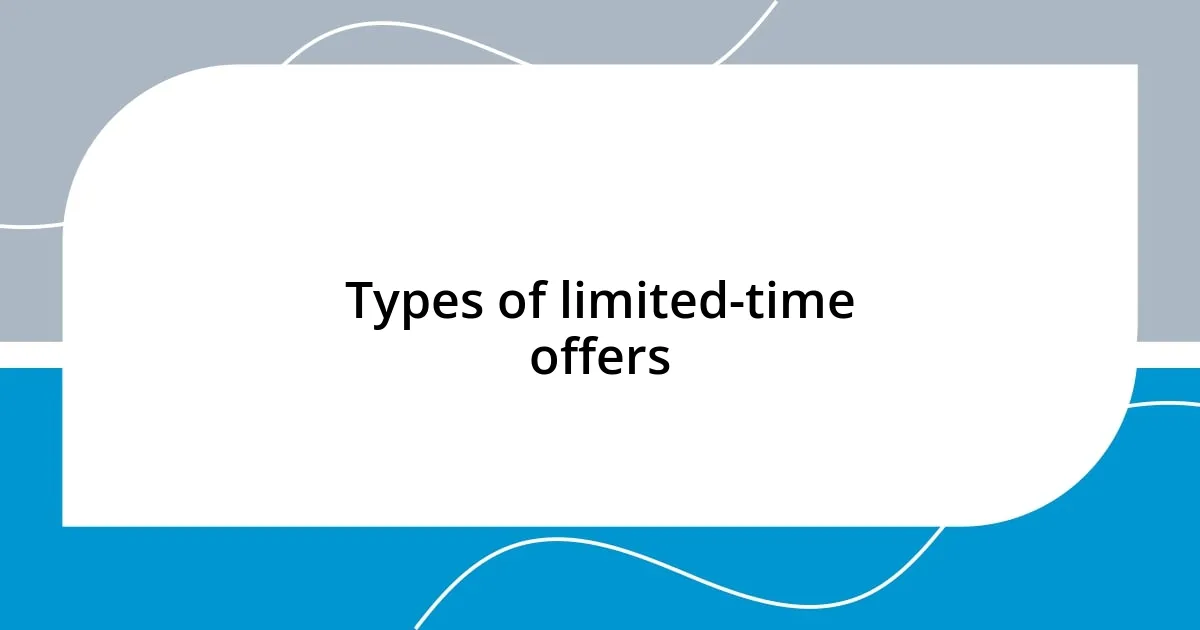
Types of limited-time offers
Limited-time offers can come in various forms, each designed to capture attention and ignite prompt decision-making. One common type is the flash sale, where products are offered at reduced prices for a very short period—think hours instead of days. I recall participating in a flash sale for a trendy pair of shoes; the thrill of snatching them up at 50% off added to the satisfaction of my purchase, even though I later wondered if I really needed another pair.
Another category worth noting is the introductory offers, which are often used by new businesses to attract customers. These offers make it easy to try something new without a big commitment. When I tried a subscription service that offered the first month for only $1, I found myself pleasantly surprised by its value. It felt like a low-stakes opportunity, and the positive experience turned me into a long-term subscriber.
Finally, there are seasonal promotions that align with holidays or special events. These can evoke strong emotions tied to the time of year, like Black Friday sales or back-to-school deals. I remember the excitement of preparing for the holidays and snagging gifts for my loved ones during these sales. It felt rewarding not just because of the deals but also due to the anticipation of making their holidays special.
| Type of Limited-Time Offer | Characteristics |
|---|---|
| Flash Sale | Short duration, steep discounts, creates urgency |
| Introductory Offer | Low commitment, encourages trial, builds customer loyalty |
| Seasonal Promotion | Time-sensitive, emotional connections, attractive discounts |
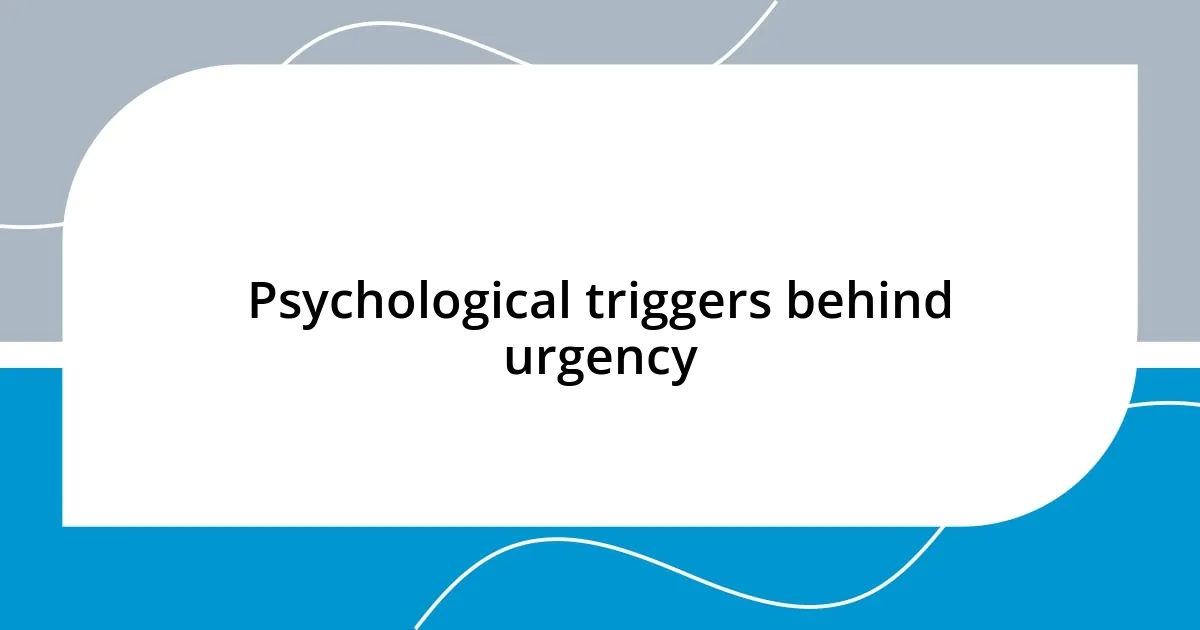
Psychological triggers behind urgency
Limited-time offers trigger certain psychological responses that compel us to act quickly, often without reflection. For instance, when I see a message that reads, “Only 5 left in stock!” I feel an immediate tension in my gut, urging me to decide on the spot. That small detail can send a wave of adrenaline, making it feel like a modern-day treasure hunt. It’s intriguing how these phrases are deliberately designed to spark our instinctive need to secure our place before it slips away.
Here are a few psychological triggers behind urgency:
- Fear of Missing Out (FOMO): The anxiety of potentially missing an opportunity.
- Scarcity: A perceived limit on availability that can create a sense of value.
- Time Pressure: Countdown timers that amplify the urgency, forcing quicker decisions.
- Social Proof: Seeing others buy or express interest validates our desire to join in.
- Loss Aversion: The fear of losing something is often a stronger motivator than the prospect of gaining something.
These effects can turn everyday shopping into an almost adventurous experience. I still recall the time I accidentally stumbled upon a limited-time offer for a class I had long wanted to take. With only hours left to secure my spot, excitement replaced my hesitation, compelling me to enroll. That rush was unforgettable, but it also made me wonder—am I making choices driven by my values or just reacting to the urgency? It’s a fascinating area to explore, isn’t it?
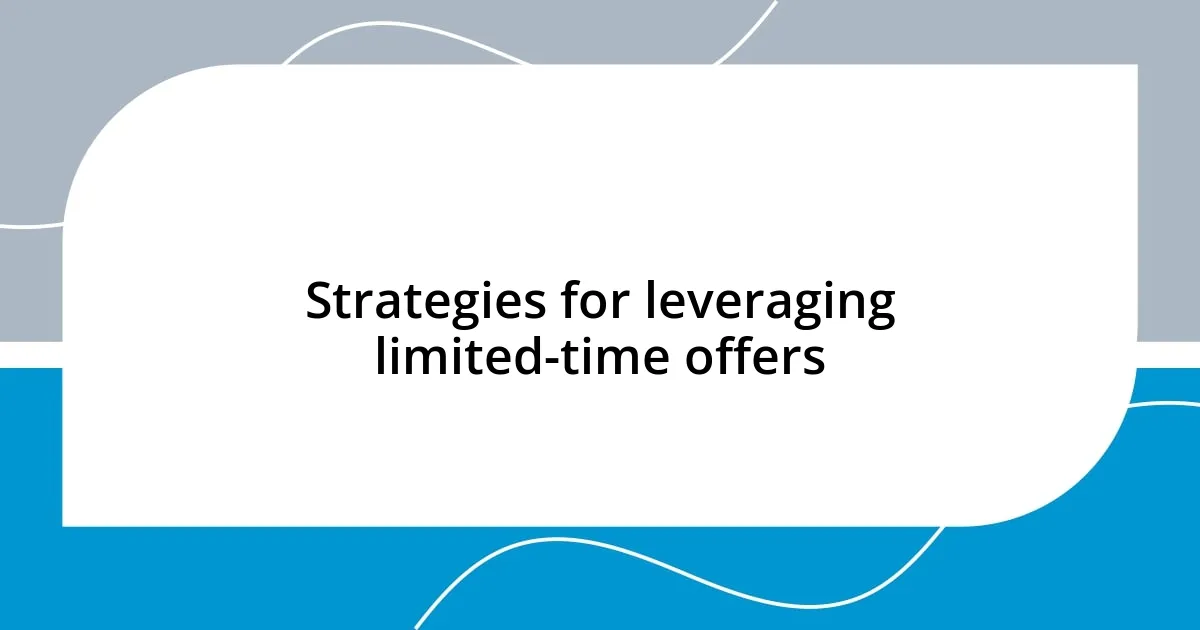
Strategies for leveraging limited-time offers
When it comes to leveraging limited-time offers, I’ve found that timing can be the key to maximizing value. For instance, I’ve noticed that checking in on my favorite websites during their off-peak hours often leads me to find exclusive offers that few others notice. I wonder: how many missed opportunities slip by when we follow the crowd rather than strike out on our own? By developing a habit of exploring during quieter times, I often score the best deals before they vanish.
Another strategy I use is to set reminders for upcoming sales or seasonal promotions. This habit has served me well, especially when I subscribe to newsletters from brands I love. One time, I received an email alerting me to a surprise flash sale on a pair of comfy jeans I’d been eyeing for weeks. I felt a rush of excitement, knowing I was prepared to act quickly. Isn’t it rewarding when a well-planned moment aligns perfectly? By doing this, I feel more in control and make my shopping experiences not just about grabbing deals but also about connecting with brands that resonate with me.
Finally, I’ve learned to approach limited-time offers with a mindful perspective. It’s all too easy to get swept up in the frenzy, but I often pause for a moment to reflect: “Do I really need this right now?” For example, during a recent holiday sale, I resisted impulsive purchases on shiny gadgets and instead focused on gifts that aligned with genuine intentions. Isn’t it liberating to prioritize authenticity over urgency? This strategy allows me to enjoy limited-time offers while staying true to my values, ultimately leading to more satisfying experiences.
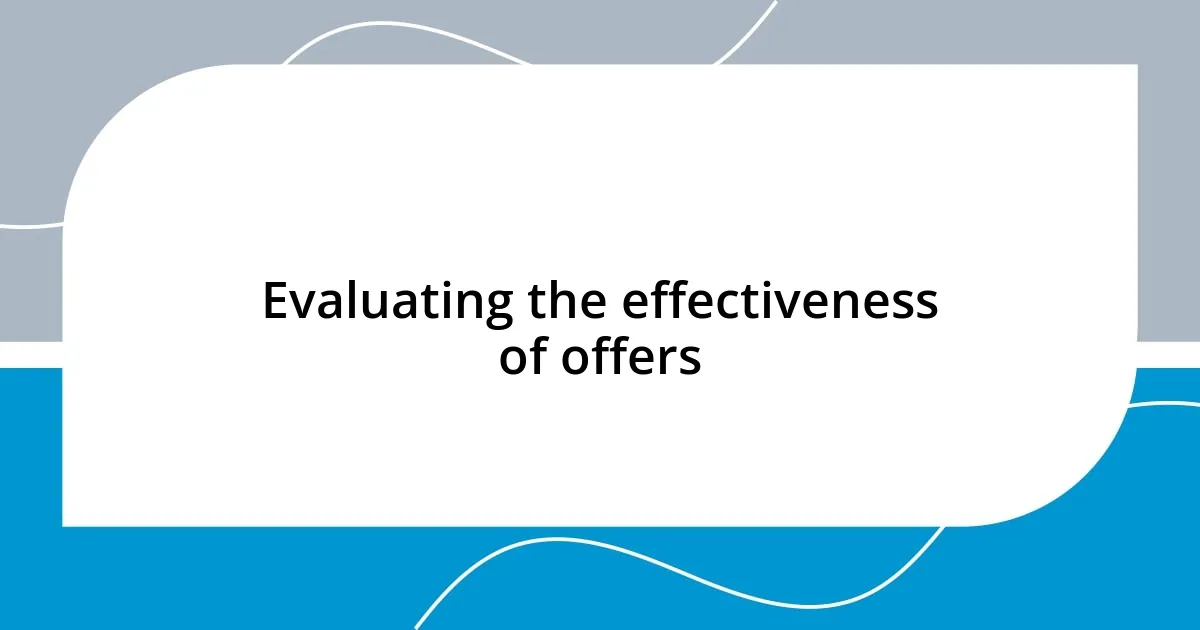
Evaluating the effectiveness of offers
Evaluating the effectiveness of limited-time offers can be quite revealing. I’ve noticed that not all offers incite the same level of urgency in me. For instance, a week-long sale feels different than a flash sale lasting just a few hours. It’s interesting how the perceived timeline can shift my priorities—sometimes, the ticking clock really amplifies my excitement. Have you ever felt that rush from a nearly expired deal? It’s exhilarating but also forces a quick assessment of what truly matters in my shopping journey.
I often reflect on how well-designed limited-time offers can lead me to make purchases I might have otherwise delayed. Once, I encountered a limited-time subscription deal that combined a service I loved with an exclusive discount. The countdown timer was ticking, and it was hard to resist. I realized that the effectiveness of these offers isn’t just in the urgency they create, but in how they tap into my desires and enhance my overall experience. It’s as if the offer was crafted just for me, making the decision feel even more rewarding.
However, there are moments when I need to recalibrate my approach. I recall a time when I fell for an enticing deal on a gadget that sounded perfect but turned out to be a fleeting whim. Afterward, I wondered whether the thrill of the offer overshadowed my true needs. It’s a learning experience and a reminder that while limited-time offers can be exciting, I must evaluate their role in my purchasing decisions. What about you—how do you determine whether an offer is really worth your time and attention?
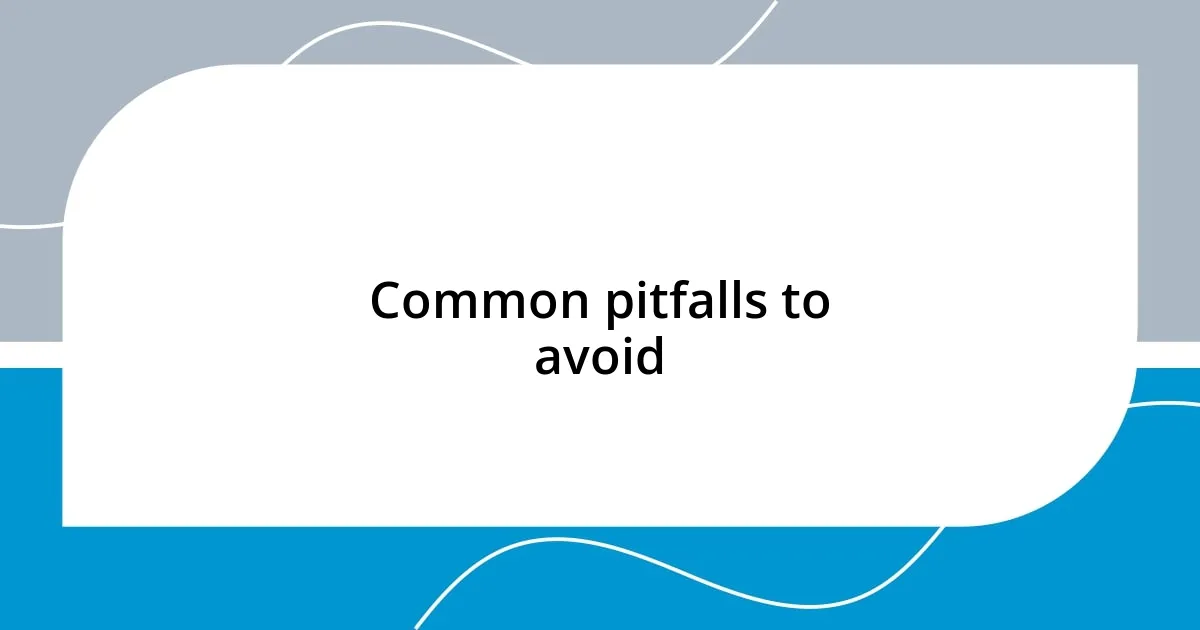
Common pitfalls to avoid
One common pitfall I’ve noticed is letting hype dictate my buying decisions. I remember this one time, I was at a pop-up shop for a limited-edition sneaker release, surrounded by others who were just as eager. The excitement was palpable, and I almost bought a pair on impulse without checking if they actually fit my lifestyle. Has that ever happened to you? Sometimes, it’s important to step back and assess whether the excitement aligns with genuine need or just the fear of missing out.
Another mistake I’ve encountered is overlooking the fine print. There have been occasions when I’ve rushed into a deal, only to discover hidden fees or restrictive terms that made the offer less appealing. A specific instance involved a subscription service that claimed to be 50% off for the first month, but I didn’t realize the renewal rate would skyrocket after that. I’ve learned to take a few moments to read the details because understanding what I’m really signing up for saves me from potential disappointment later. Do you ever feel that rush to click “buy,” but then find yourself regretting it afterward?
Finally, comparing offers can be tricky. I once focused too much on a single brand’s limited-time sale, thinking it was the best deal ever, until I took a few minutes to do some research. I found a competing brand with a better discount for a similar item, and I couldn’t help but feel a mix of regret and relief. By broadening my search, I not only saved money but also discovered new brands I now love. Have you experienced this? It just goes to show that taking the time to compare options can turn a fleeting offer into a treasure trove of possibilities.


